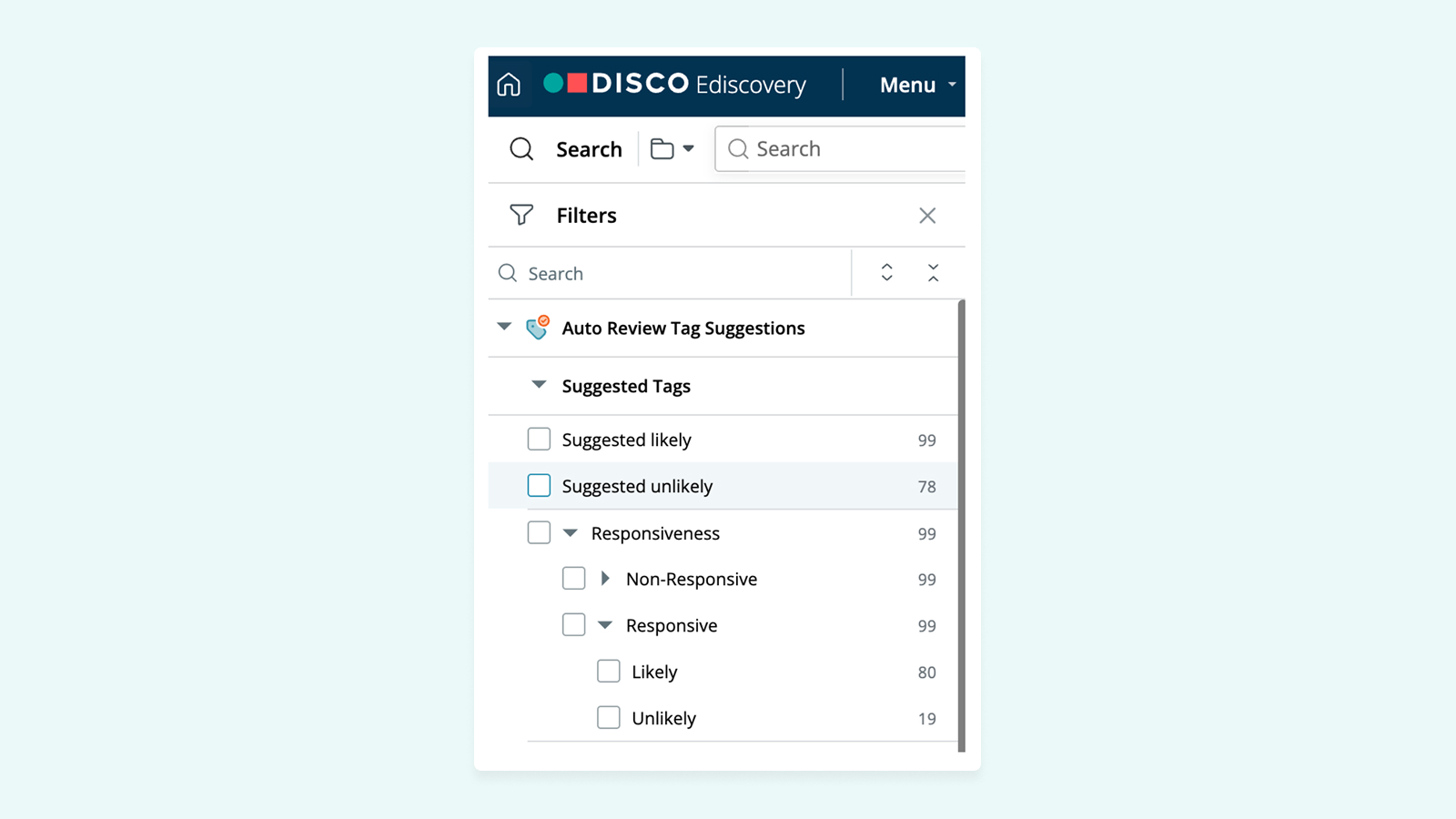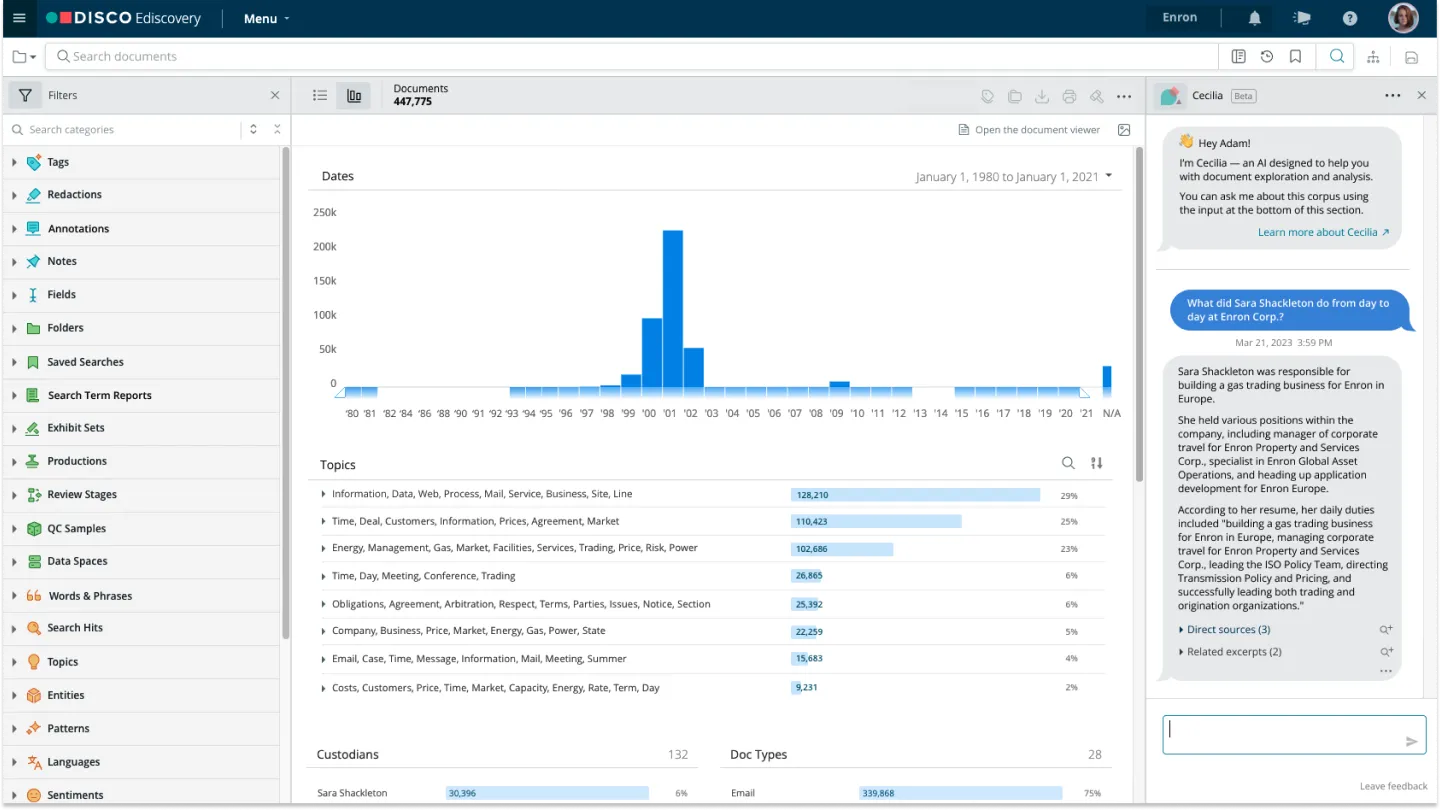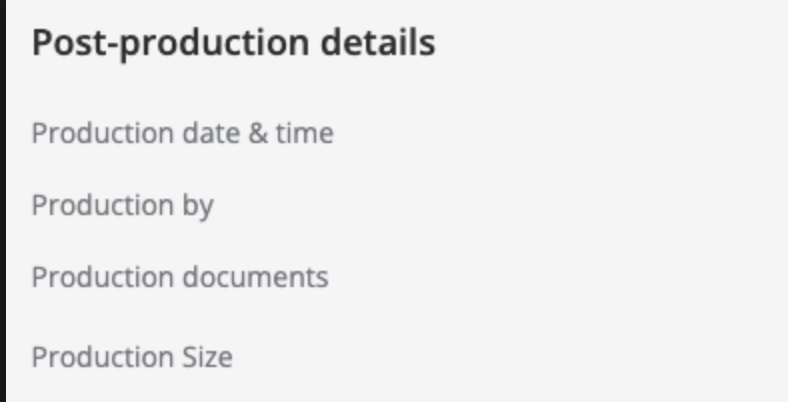⚡️ 1-Minute DISCO Download
Digital forensics is the disciplined process of uncovering and preserving hidden digital facts. It moves beyond obvious files to find deleted data, metadata, and user activity logs, turning scattered terabytes into a verifiable, trusted narrative for litigators.
📊 Key Quote: "The challenge isn’t finding evidence — it’s finding what matters amid terabytes of data."
🌊 Dive Deeper: Check out "Where the Evidence Hides" for 6 types of data that matter, from deleted files and communication artifacts to metadata and user logs that can prove intent.
Every case leaves a digital footprint — evidence that can confirm or contradict the story being told. Finding and interpreting that evidence is essential to building a winning case.
Forensics gives litigators something few other tools can: certainty. It turns data into evidence that can be verified, explained, and trusted. By tracing actions and intent through digital artifacts, digital forensics helps attorneys understand exactly what happened, so they can build a case to prove it.
In this guide, you’ll learn how digital forensics helps legal teams uncover, interpret, and preserve hidden evidence that can make or break a case in today’s data-driven litigation.
🎬 Love video? Watch this article as a webinar: The Hidden Evidence: How Forensics Data Wins Cases in Modern Litigation
Why forensics matters in modern litigation
A generation ago, evidence came in boxes. Today, it comes in terabytes. Every minute, our digital world generates staggering amounts of potential evidence:
- 1.7 million prompts sent to ChatGPT
- 149,000 emails and 16 million text messages exchanged
- 11.4 million Google searches
- 350,000 X posts and 2.4 million snaps on Snapchat
- 3.7 million photos taken on smartphones
- 6.3 million minutes of Zoom meetings
That’s every 60 seconds — and that list only scratches the surface.
For litigators, this explosion of data changes everything. Information is no longer stored neatly in one place or one format. It’s scattered across devices, cloud platforms, and apps, and it continues to grow every day. The challenge isn’t finding evidence — it’s finding what matters amid terabytes of data.
💡Wait – doesn’t that sound a lot like ediscovery? Read the explainer: Ediscovery vs Digital Forensics: Understanding the Difference.
Finding the evidence that matters
To locate critical evidence in this sea of data, forensic experts focus on the places where digital activity leaves its trace.
- Devices: Computers, mobile phones, tablets, and internet of things (IoT) devices record user activity, document changes, and communications that reveal who did what and when.
- Cloud environments: SaaS platforms and cloud storage systems hold files and collaboration data, often with critical metadata stored separately from the content itself.
- Network data: Servers, access logs, and communication systems capture connections, transfers, and patterns of behavior that show how information moved.
- Backup and archived data: System backups, email archives, and shadow copies preserve historical versions of files that may no longer exist elsewhere.
The problem is that much of this evidence is hidden, deleted, or incomplete — scattered across systems that don’t speak the same language. The solution is digital forensics: the disciplined process of uncovering, validating, and preserving those facts so the evidence tells the full story.
Where the evidence hides: Beyond the obvious
Even when digital evidence appears complete, much of what matters isn’t visible at first glance. The real story often lives beneath the surface.
6 Types of hidden data and their significance
Metadata
Behind every file or piece of data is its metadata, or data about the data. It includes timestamps, authorship, access logs, and device information, showing when and how a file was created, edited, or shared. In cloud systems, it often lives separately from the file itself, so examiners must collect and reconcile both to maintain authenticity.
Deleted and fragmented data
After a file is deleted, traces often remain in file tables, unallocated space, or Windows shadow copies. Forensic examiners can locate and reconstruct those fragments, often recovering portions or complete versions of files previously thought lost. These recoveries can prove or disprove claims of spoliation and help reconstruct the sequence of events that led to data loss or deletion.
User activity and system logs
Web history, application use, login and logout times, and connected devices all create a record of behavior. Artifacts such as jump lists, link files, and shellbags help reconstruct that activity, revealing when external devices were connected or specific files were opened. Together, these records establish who accessed what, when, and from where — providing critical details that prove presence, intent, or knowledge.
Communication artifacts
People tend to talk freely in texts, chats, and messages. As a result, artifacts from Slack, Teams, WhatsApp, and similar apps often reveal the unfiltered truth of a situation — exposing motive, revealing timelines, and filling in missing context.
Geo-location data
Modern devices track where they’ve been and when, creating location histories that can confirm or challenge an account of events. This information can establish alibis, document movements, or trace the path of an asset. But location data can be misleading — apps often log the nearest cell tower or cache nearby points of interest, creating the impression that a device was somewhere it wasn’t. Careful analysis is essential to distinguish genuine movement from these false signals.
Embedded objects and hidden files
Critical data can be concealed inside or attached to other files. These embedded or linked objects often escape detection in standard collections, leaving key evidence overlooked. Forensic tools extract and analyze these hidden layers to ensure every related document or data object is properly identified and preserved.
Case trajectory impact: How hidden data changes everything
Hidden data can change the course of a case. A single artifact can expose deleted communications, altered timelines, or actions that contradict sworn statements — revealing a reality very different from what teams first believed.
Chat logs, shared drives, or device histories often identify additional custodians, witnesses, or collaborators who weren’t initially part of discovery. And because digital forensics can prove whether data was created, shared, or deleted, it can either strengthen or weaken claims, turning assumptions into evidence or unraveling them entirely.
Forensics in action: Real stories from the field
Let’s look at some case studies from the field and lessons learned from each scenario.
Debunking alleged spoliation claims
In one employment dispute, the opposing expert claimed that more than 14,000 text messages had been deleted from an employee’s phones. But when forensic examiners dug into the data, the picture changed.
Using lag analysis — a technique that pinpoints where messages are missing in a device’s database — they discovered those gaps weren’t new at all. The deleted messages had disappeared gradually over the life of two iPhones, not in a recent cover-up.
The finding flipped the narrative. There had been no spoliation, no attempt to hide evidence, just normal device turnover. Within a week of the forensic report, the motion was withdrawn.
Lesson learned: Digital evidence doesn’t always tell a straightforward story. Forensic techniques like lag analysis help legal teams separate what’s missing from what’s meaningful, proving that sometimes, the absence of data can speak louder than the data itself.
Counting the cost of an internal IT team
Some companies try to save time and money by handling forensic collections internally. But even skilled IT teams can overlook critical data or create defensibility issues that surface later in court. An Am Law 20 firm had learned that the hard way on previous matters and wanted to avoid making the same mistake twice.
Facing a fast-moving production deadline, they brought in DISCO’s forensic examiners to handle the collection from the start. Certified experts gathered data from 23 custodians, preserved the chain of custody, and delivered clean, review-ready files — meeting the deadline without compromising accuracy or defensibility.
Lesson learned: Shortcuts in data collection can jeopardize an entire case. When evidence isn’t gathered forensically, gaps, altered metadata, or incomplete records can erode defensibility and credibility in court. Professional examiners prevent those risks from the outset, ensuring accuracy and preserving the integrity of the evidence.
Defending trade secrets
In a major intellectual property dispute, a company suspected that a group of former employees had walked out the door with confidential files. A forensic analysis of more than thirty devices revealed a coordinated effort to move data — through personal email, chat platforms, and dozens of USB drives — before and after the team left.
The investigation went further, uncovering traces in Google Drive for Desktop databases that showed mass uploads of company files to personal and shared drives. Even after a restraining order was in place, the defendants deleted entire folders, confirming not just data loss but deliberate intent.
Lesson learned: Departing-employee cases rarely hinge on one device or one action. Forensic analysis connects fragments from many sources — computers, cloud systems, and mobile devices — to piece together the story of what really happened. When handled by experts, those fragments form a defensible, data-driven narrative that can stand up in court.
Common pitfalls that can sink a case – and how to avoid them
Evidence is only as strong as the process used to collect it. These are the errors that can compromise a forensic investigation, and how to avoid them.
Preservation Pitfalls
The first step in any forensic process is protecting the integrity of the evidence. Yet that’s where many cases go wrong.
Improper chain of custody: Every transfer of evidence must be documented, from collection to courtroom. When custody isn’t tracked or recorded, opposing counsel can challenge the authenticity of the data.
Overwriting or altering original data: Even small actions — opening a file, moving it to another folder, or copying it incorrectly — can change timestamps and metadata. Once that happens, it’s impossible to fully prove the data’s original state.
Failing to preserve all relevant data sources: Overlooking devices, cloud accounts, or shared storage can leave critical gaps. A complete inventory of data sources, verified by a forensic expert, ensures nothing essential is lost or overlooked.
Collection Errors
Once evidence is preserved, the real challenge begins: collecting it completely, accurately, and defensibly.
Incomplete collections: Missing a device, an account, or a source of cloud data can leave key evidence undiscovered. Every potential data source should be identified and verified before collection begins to ensure a defensible process.
Using non-forensic methods for collection: Self-collection might seem faster or cheaper, but it’s one of the costliest mistakes a legal team can make. Keyword searches, screenshots, and ad-hoc exports can alter or omit data, creating gaps that can’t be repaired later.
Lack of proper documentation: Forensic examiners document every step — the tools used, the conditions of collection, and any anomalies encountered. Without that record, even a well-executed collection can be challenged because there’s no verifiable chain of events.
Interpretation & presentation missteps
After evidence is collected, its impact depends on how it’s interpreted and presented.
Misunderstanding metadata: Terms like “last modified” and “last accessed” may sound interchangeable, but they reflect different actions. Misreading these values can lead to incorrect assumptions about when a document was created, viewed, or altered.
Presenting raw data without context: Forensic evidence isn’t self-explanatory. Simply handing over spreadsheets or log files can create confusion instead of clarity. Expert analysis is essential to translate technical findings into language attorneys and fact-finders can understand.
Failing to integrate forensic findings into the overall case narrative: Forensics tells a story. When findings are siloed instead of woven into the broader argument, their impact is lost. Integrating those insights early — during scoping and strategy discussions — ensures they strengthen, rather than complicate, the case.
The expert advantage: When to bring in forensic specialists
Mistakes in preservation, collection, or interpretation can derail a case. That’s why legal teams depend on forensic experts to ensure digital evidence is collected, preserved, and presented with defensibility and accuracy.
When to engage forensic specialists
Bringing in forensic experts early helps ensure proper preservation, defensible collection, and clear guidance before problems arise. It also prevents many of the mistakes that lead to costly delays later.
But legal teams may also rely on them in specific situations, such as:
- When data requires collection or analysis: Forensic tools and expertise uncover hidden or deleted data while maintaining the integrity of the evidence.
- When spoliation is suspected or alleged: Experts can determine whether data loss was accidental or deliberate and provide defensible findings that withstand scrutiny.
- For complex data types or large volumes: Handling structured databases, cloud environments, or vast data sets requires specialized methods to ensure accuracy and completeness.
- When technical expertise is required for court testimony: Certified forensic examiners can explain complex technical findings in clear, legally sound language.
What to look for in a forensic expert
Not all forensic professionals bring the same level of experience or perspective. The right expert combines technical skill with legal understanding, ensuring the evidence stands up to scrutiny and the findings make sense to everyone involved.
- Certifications and experience: Look for examiners with recognized credentials and a proven track record handling matters similar to yours.
- Understanding of legal processes and rules of evidence: Forensic work succeeds when technical skill is matched by a firm grasp of legal process and evidentiary standards.
- Communication skills: The best experts can translate technical details into clear, defensible language that attorneys, judges, and juries can understand.
Seamless integration with your legal team
Effective forensic practice depends on seamless collaboration between examiners and attorneys. When they work in sync, experts can interpret findings, identify what matters most, and connect the dots that shape the case narrative.
Here are some ways digital forensics experts contribute to legal strategy:
Defining scope and objectives: Getting forensics involved early allows them to help guide preservation and collection decisions before issues arise. A shared understanding of scope keeps the process focused, defensible, and efficient.
Establishing communication channels: Ongoing dialogue between examiners, attorneys, and project managers keeps everyone aligned, prevents misinterpretation of findings, and ensures that no detail is lost in translation.
Leveraging expert findings, reports, and testimony effectively: The right forensic partnership turns raw technical data into clear, compelling evidence — strengthening arguments and helping counsel tell a complete story.
Turning hidden clues into courtroom wins
The true value of digital forensics isn’t just in uncovering data — it’s in revealing the story behind it. When done right, digital forensics connects scattered traces into a complete narrative, protects the integrity of the evidence, and transforms potential risk into strategic advantage.
When digital forensics becomes part of the case strategy from the start, legal teams can work faster, uncover pivotal facts, and present a story the evidence can prove.
Ready to put our forensic expertise to work? DISCO provides a full suite of forensic services, including consulting, preservation, collection, analysis, and testimony. Our pressure-tested processes offer fast and defensible tactics and remove unnecessary delays, allowing you to start your review quickly.
Contact us to learn how our certified examiners can help you uncover the facts that matter most — quickly, defensibly, and with confidence.






%20(1).jpeg)







.png)
